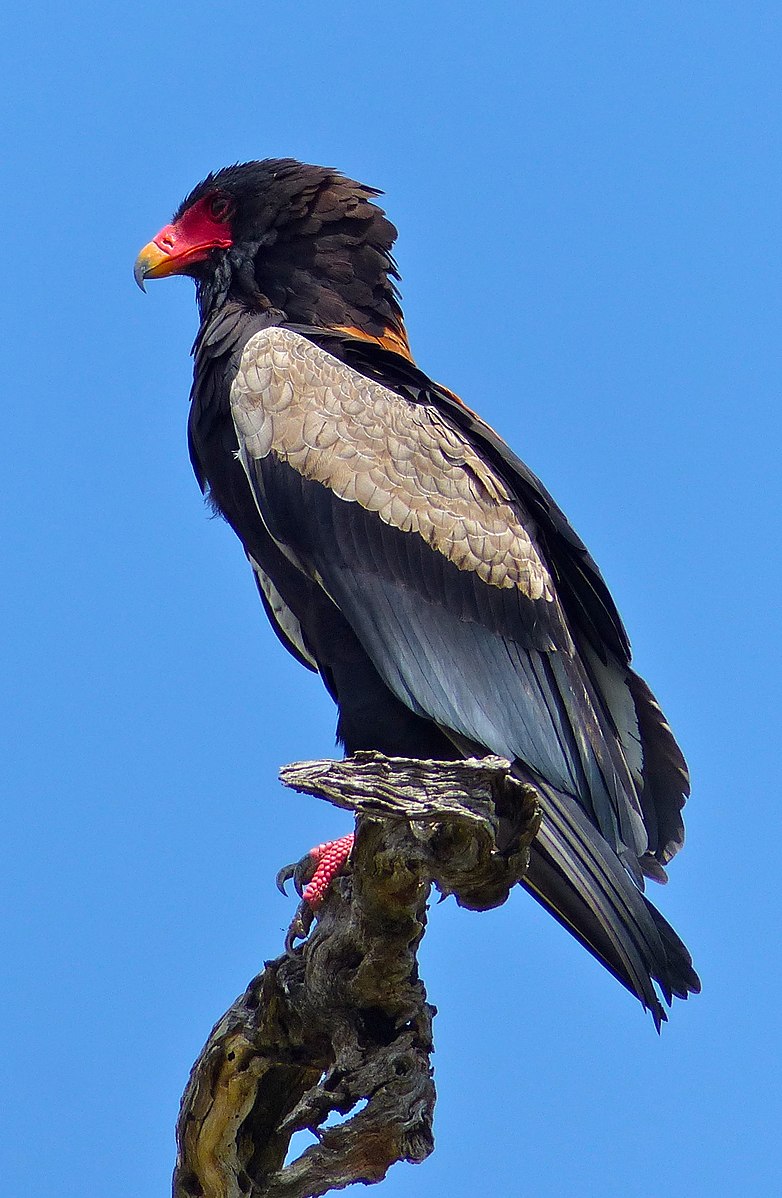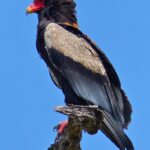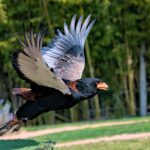The Bateleur Eagle, scientifically known as Terathopius ecaudatus, is a medium-sized eagle found widely in Africa, south of the Sahara Desert, and in southwest Arabia. It is known for its striking appearance and unique flying style, but one of the most intriguing aspects of this raptor is its weight range.
The Bateleur Eagle’s Weight: A Closer Look
The Bateleur Eagle is the smallest eagle in Africa, with a weight range of 4 to 6.5 pounds (1.8-2.9 kg). This weight range is quite fascinating, as it showcases the diversity and adaptability of this species.
Factors Influencing Bateleur Eagle Weight
Several factors can influence the weight of a Bateleur Eagle, including:
- Age and Sex: Older Bateleur Eagles tend to be heavier than younger individuals, and males are generally larger and heavier than females.
- Habitat and Food Availability: The weight of a Bateleur Eagle can vary depending on the availability and abundance of its prey in its habitat. Eagles living in areas with ample food resources may be heavier than those in areas with scarce resources.
- Time of Year: Bateleur Eagles may experience seasonal fluctuations in weight, with individuals being heavier during the breeding season when they need more energy to sustain their activities.
Comparing Bateleur Eagle Weight to Other Eagles
When compared to other eagle species, the Bateleur Eagle’s weight range is relatively small. For example, the Martial Eagle, another African eagle, can weigh up to 14 pounds (6.4 kg), while the Steller’s Sea Eagle, the largest eagle in the world, can weigh up to 20 pounds (9 kg).
| Eagle Species | Weight Range (pounds) |
|---|---|
| Bateleur Eagle | 4 – 6.5 |
| Martial Eagle | 7 – 14 |
| Steller’s Sea Eagle | 10 – 20 |
This compact weight range of the Bateleur Eagle is likely an adaptation to its preferred habitat and hunting style, which involves low-altitude soaring and agile maneuverability.
The Bateleur Eagle’s Unique Appearance and Behavior
 Image source: Bateleur Eagle By Bernard DUPONT
Image source: Bateleur Eagle By Bernard DUPONT
In addition to its weight, the Bateleur Eagle is known for its striking appearance and unique behavior. Its distinctive features include a red face, chestnut-colored back and tail, intense black body, silver wings above, and brilliant white below, as well as red legs.
Bateleur Eagle’s Unique Flying Style
One of the most remarkable aspects of the Bateleur Eagle is its flying style. With its short tail and narrow wings, the Bateleur is a master of low-altitude soaring flight, using thermal currents and updrafts to conserve energy while hunting and searching for prey.
Hunting and Feeding Habits
Bateleur Eagles are diurnal raptors, meaning they are active during the day. They have a diverse diet, scavenging on dead animals but also hunting birds, eggs, small reptiles, small mammals, and insects. Their hunting strategy involves using their keen eyesight to spot prey from a distance and then swooping down to capture it.
Conservation Efforts for the Bateleur Eagle
Unfortunately, the Bateleur Eagle is facing several threats, including habitat loss and accidental poisonings. As a result, the species is listed as endangered on the IUCN Red List, with an estimated population of 10,000-100,000 individuals left in the wild, mostly concentrated in protected areas.
Ongoing Conservation Initiatives
Various conservation organizations and initiatives are working to protect the Bateleur Eagle and its habitat. These efforts include:
- Habitat preservation and restoration: Protecting and restoring the open habitats, such as woodland savannas and grasslands, that the Bateleur Eagle prefers.
- Reducing the use of toxic pesticides and poisons: Educating local communities and working with authorities to limit the use of harmful substances that can inadvertently poison Bateleur Eagles and other wildlife.
- Monitoring and research: Conducting population surveys and studies to better understand the Bateleur Eagle’s ecology and identify the most effective conservation strategies.
- Community engagement: Involving local communities in conservation efforts and raising awareness about the importance of protecting this iconic African raptor.
By understanding the Bateleur Eagle’s weight range and other unique characteristics, we can better appreciate the diversity and adaptability of this remarkable species. Through continued conservation efforts, we can work to ensure that the Bateleur Eagle continues to soar gracefully over the African skies for generations to come.
Reference:
- The Peregrine Fund: https://peregrinefund.org/explore-raptors-species/eagles/bateleur-eagle
- Critter Squad: https://www.crittersquad.com/fact-sheets/bateleur-eagle-fact-sheet/
- Oiseaux-Birds: https://www.oiseaux-birds.com/card-bateleur.html


